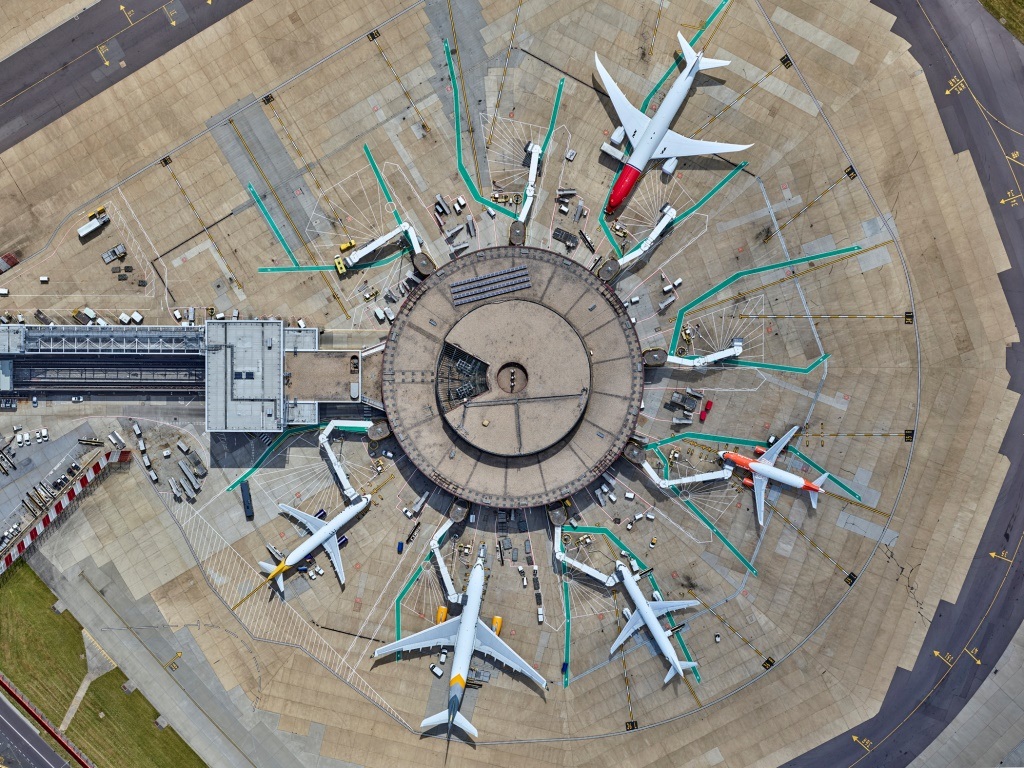

Gatwick Airport puts data right at the heart of business operations with Tableau
Tableau has played pivotal role in Gatwick’s digital transformation strategy
Visual data mapping used to pinpoint new revenue and service opportunities
Intuitive analytics makes data-driven decision making accessible to all employees
Nestled in the heart of south-east England, Gatwick Airport welcomes millions of international business travellers and holiday makers through its doors every year. As one of the world’s leading airports, it’s constantly looking for new ways to improve the travel experience for its customers - from the food and shopping facilities on-site, to the range of countries and destinations served.
Here, Shariq Wagener, Director of Data & Analytics for Gatwick Airport’s implementation partner Zsah, goes back to 2019 and discusses why Gatwick relies on Tableau and how analytics fits into its overall digital transformation strategy, putting data right at the heart of business operations. Since its implementation, Tableau has given employees access to fast, intuitive analytics through a centrally governed platform, helping them make informed, data driven decisions that benefit customers every day. The benefits will play a key role in the recovery from pandemic.
Data trends and insights that might previously have been missed or overlooked are quickly identified, meaning they can be factored into decision making or used as proof points in new proposals.
What were the key drivers behind Gatwick Airport’s recent digital transformation project?
Gatwick Airport is an incredibly data rich organisation. It has analysts spread across a wide range of departments, from commercial and marketing to new business development, all of whom deal with a huge amount of data every day. However, following an assessment in 2019 we realised there were a lot of problems with siloed systems and non-standardised ways of working that created major inconsistencies across the enterprise. People were asking the same questions internally but getting very different answers, primarily because the data they were using didn’t reside in a clean, well governed environment that was suited to self-service analytics.
How is Tableau helping inform and improve Gatwick Airport’s commercial operations?
Having a platform that works in harmony with the DataOps lifecycle is extremely valuable. DataOps consists of three stages - exploit, scale and support. Prior to Tableau, Gatwick’s business analysts didn’t have the ability to exploit datasets themselves, so had to rely on the IT team to do it for them. With Tableau, not only can these analysts now exploit the datasets available in the platform, they can also create and interrogate their own, helping identify new commercial opportunities.
For example, the commercial department conducts passenger surveys at the airport, collecting a range of information from passengers, such as how far they travelled to get here, where they’re flying to, and whether Gatwick was their first choice. Analysing this data helps the team better understand the market and spot areas where things like Gatwick’s airport transfer service can be expanded, opening up new revenue streams in the process.
Before Tableau was rolled out in 2019, the team would waste valuable hours trying to correlate different datasets in spreadsheets and manually transpose the results onto heat maps for use in new business proposals. Now, everything is done instantly in Tableau. Data is linked together at the backend and automatically pulled from the relevant sources into a comprehensive heatmap that can be filtered by geography or customised however needed. They can even drill down into individual counties, making analysis of factors like passenger journey times and catchment areas really easy to perform. As a result, data trends and insights that might previously have been missed or overlooked are quickly identified, meaning they can be factored into decision making or used as proof points in new proposals.
What other organisational benefits has Tableau helped Gatwick Airport achieve?
Decision makers at every level, from senior executives to airport operatives, now have direct access to the information they need to make fast, informed decisions whenever required. This means the company’s analysts aren’t being bombarded with repeated data questions and requests anymore. As a result, they are free to focus on more strategic analytics projects instead, such as forecasting and scheduling, airport optimisation and new pricing strategies.
Bringing this kind of capability in-house is also saving Gatwick money. Now the organisation can discover and act on data insights itself, whereas before it had to buy them from specialist analytics vendors. It’s no longer having to make an ongoing investment to ask questions of its own data and find the insights it needs.
Everyone is more engaged with data. They’re using it to speak with each other, learn from each other and help each other as well. If that isn’t a strong data culture, I don’t know what is.
What kind of impact has digital transformation had on Gatwick Airport’s organisational culture?
Culture comprises three key elements: technology, people and processes. The first things digital transformation addressed were the technology and processes. Now, by creating an enablement plan throughout the entire organisation, it’s bringing employees together as well. As a result, everyone is more engaged with data. They’re using it to speak with each other, learn from each other and help each other as well. If that isn’t a strong data culture, I don’t know what is.
What made Gatwick Airport choose Tableau as a key element of its digital transformation?
An intuitive platform like Tableau, that’s easy to implement and engage with, plays a critical role in driving successful digital transformation. Implementing it has enabled Gatwick to bring all of its operational data into one central location, helping employees conduct their own analytics and identify key insights much faster than was previously possible.